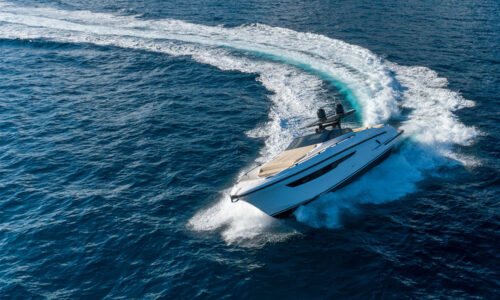Are Life Jackets Required on Boats?

Key Takeaways:
- Yes, life jackets are required on boats by law.
- Federal regulations mandate having a lifejacket for each person on board.
- State regulations may have additional requirements, especially for children and specific types of watercraft.
- Wearing a lifejacket significantly increases survival rates in boating accidents.
Table of Contents
- Importance of Life Jackets
- Legal Requirements
- Types of Life Jackets
- Life Jacket Safe Practices
- Myths & Misconceptions
Importance of Lifejackets
Did you know that approximately 84% of drowning victims in boating accidents were not wearing lifejackets? Drowning is the number one cause of boating fatalities and the vast majority were not wearing a life jacket. Life jackets save lives, it’s in the name!
64% of boating deaths drowned not wearing a life jacket.
By choosing to wear a life jacket you significantly increase your survival odds if a boating accident were to occur.

Data on Boating Accidents and Fatalities
According to the U.S. Coast Guard’s 2022 Recreational Boating Statistics report, there were over 4,000 boating accidents, resulting in nearly 700 deaths. Drowning was the leading cause of death, accounting for nearly 80% of all fatalities.
Correlation Between Lifejacket Use and Survival Rates
The data shows that wearing a lifejacket significantly increases the chances of survival in a boating accident. The same report from the U.S. Coast Guard revealed that 84% of drowning victims were not wearing lifejackets. Conversely, the survival rate among those who wore lifejackets was markedly higher, emphasizing the critical importance of this simple yet effective safety measure.
Benefits of Wearing Life Jackets
- Increased Survival Rates: Significantly boosts chances of survival in the event of an accident or capsizing.
- Prevents Drowning: Provides buoyancy to keep individuals afloat, even if they are unconscious or injured.
- Enhanced Visibility: Often brightly colored, making it easier for rescuers to spot individuals in the water.
- Warmth and Protection: Can provide some insulation against cold water and protect against hypothermia.
- Peace of Mind: Offers reassurance to boaters and their families, knowing that safety measures are in place.
- Ease of Rescue: Equipped with features like whistles and reflective materials to aid in rescue efforts.
Federal Life Jacket Regulations
The U.S. Coast Guard (USCG) enforces strict regulations regarding the use of lifejackets to ensure the safety of all boaters.
Federal law mandates that there must be an appropriately sized, USCG-approved lifejacket for each person aboard a vessel.
Additionally, boats 16 feet and longer (except canoes and kayaks) must carry one Type IV throwable device, such as a buoyant cushion or ring buoy.
State Life Jacket Laws
While federal regulations provide a baseline, individual states often have additional requirements. For example, in California, children under 13 must wear a lifejacket at all times on a moving vessel of any length. In New York, anyone on a boat less than 21 feet long from November 1 to May 1 must wear a lifejacket due to the risk of cold water immersion.
State life jacket laws add additional requirements for boaters. They never override or ‘take away’ a federal law.
Know Local Laws Before Boating
Boaters should be aware of and comply with the specific lifejacket regulations of the state where they are boating. Failing to do so can result in fines and, more importantly, increased risk of accidents and fatalities. Before heading out on the water, check the local laws and ensure that your vessel has the appropriate lifejackets for all passengers, including children.
Proper Lifejacket Use for Specific Activities
Ensure you have the right type of lifejacket on board for the intended activity. Different activities on the water come with unique risks, and lifejackets are designed to address these specific needs. For example, do not use inflatable PFDs (Personal Flotation Devices) for high-impact activities like personal watercraft (PWC) operation or waterskiing; they are unsuitable and might not deploy correctly in high-speed impacts.
The law requires that the type of lifejacket matches the activity to guarantee maximum protection. Using the wrong PFD can lead to severe safety risks and legal consequences. In many states, it is illegal to operate a PWC with an inflatable PFD. Similarly, ensure children wear inherently buoyant lifejackets at all times.
Common Myths and Misconceptions About Life Jackets
“I Can Swim, So I Don’t Need One”
Many boaters believe being a strong swimmer negates the need for a lifejacket. However, statistics, real-life incidents, and expert opinions strongly counter this misconception. According to the U.S. Coast Guard, a significant percentage of drowning victims in boating accidents were proficient swimmers who were not wearing lifejackets. Unexpected situations, such as sudden rough waters, unconsciousness from a fall, or hypothermia, can incapacitate even the strongest swimmers. Nobody plans on falling (or being ejected) overboard. Nevertheless, it happens.
“Lifejackets Are Only for Kids”
Lifejackets are equally important for adults, regardless of swimming ability. Boating accidents can happen to anyone, and adults are just as vulnerable to the dangers of water as children. Strong swimmers may overestimate their ability to cope with unexpected emergencies, such as swift currents or sudden weather changes.
“Lifejackets Are Uncomfortable”
If your life jacket is uncomfortable, buy a new one. The most effective life jacket is one you will wear. While older designs may have been cumbersome, modern life jackets have evolved significantly. Today’s life jackets are made from lightweight, breathable materials for comfort and mobility. They come in various styles, including slim, inflatable options that do not restrict movement. Manufacturers continually improve designs to ensure that wearing a life jacket is comfortable.
Final Notes
Lifejackets are an indispensable component of boating safety, significantly increasing the chances of survival in accidents and emergencies. Federal and state regulations mandate the use of lifejackets, specifying the type and fit for different activities and ensuring that every person on board is protected. Despite common myths, lifejackets are essential for all, including strong swimmers and adults. Modern designs offer comfort and mobility, making it easier than ever to wear them consistently.
Call to Wear it!
According to a study by JSI Research & Training Institute, The average life jacket wear rate for all boaters was 22.3%. Let’s increase this number and make our waterways safer. Always wear a lifejacket when on the water and ensure all passengers do the same. Your diligence can save lives.
Additional Resources:
Boating
- Alabama
- Alaska
- Arizona
- Arkansas
- California
- Colorado
- Connecticut
- Delaware
- Florida
- Georgia
- Hawaii
- Idaho
- Illinois
- Indiana
- Iowa
- Kansas
- Kentucky
- Louisiana
- Maine
- Maryland
- Massachusetts
- Michigan
- Minnesota
- Mississippi
- Missouri
- Montana
- Nebraska
- Nevada
- New Hampshire
- New Jersey
- New Mexico
- New York
- North Carolina
- North Dakota
- Ohio
- Oklahoma
- Oregon
- Pennsylvania
- Rhode Island
- South Carolina
- South Dakota
- Tennessee
- Texas
- Utah
- Vermont
- Virginia
- Washington
- West Virginia
- Wisconsin
- Wyoming

